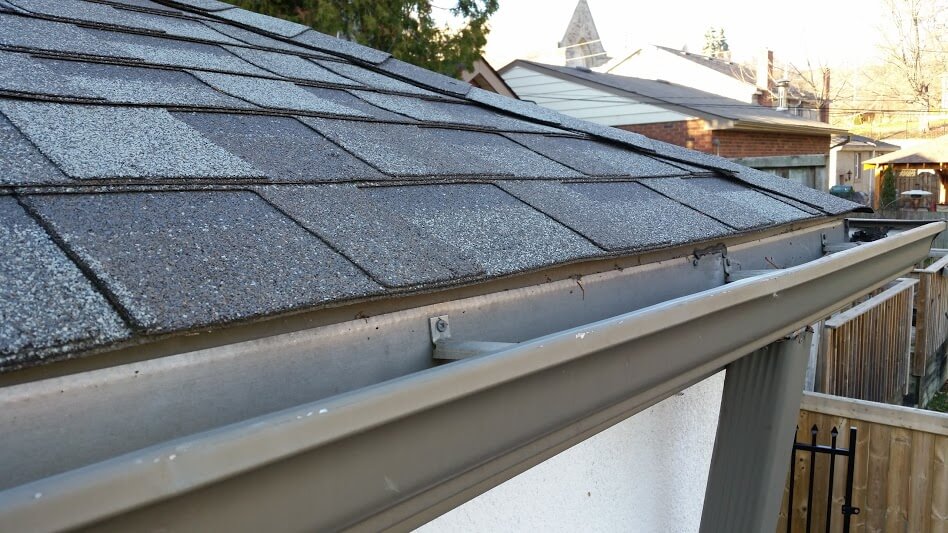While removal is critically important to mice control Ajax, it is not the only element. You should also try to be proactive in preventing them from getting inside in the first place. One way to do this is to have a drip edge installed on the eaves of your roof. If you already have a drip edge, you should be sure to maintain it properly so that it provides as much protection as possible against incursions by wildlife into your attic.
What Is a Drip Edge?
A drip edge is a galvanized piece of metal flashing installed on the eaves of your roof, i.e., the parts that extend out over the sides of your house. In roof installation, there is often a space between the fascia board and the roof deck. This space is called the carpenter’s gap, and it can range from three-quarters of an inch to two inches. A drip edge closes up this gap, not only making it more difficult for water to get under the eaves but also closing off a route by which wildlife may try to enter your home.
How Does a Drip Edge Help Exclude Wildlife?
The carpenter’s gap may look too small to provide wildlife with access to your attic. However, animals such as bats and mice need only a very small opening to get into your house. They may manage to squeeze through an opening that is one-fourth of an inch, meaning that the average carpenter’s gap provides more room than they actually need to get inside your attic and start making themselves at home. A drip edge blocks off the entryway by closing the opening so it is too small for even a mouse or bat to get through.
What Are Other Benefits of the Drip Edge?
As you might imagine, an opening of between half an inch to two inches on your roof may allow water to get in, which could lead to damage such as staining. The wind may also blow debris under the soffit, such as leaves. It isn’t good for the roof to leave the debris there, but cleaning out the gap can be a pain. The drip edge prevents you from having to perform such a chore. Without a drip edge, the shingles may just droop over the edge of the roof. Over time, the pressures exerted by weather can cause them to crack. A drip edge helps prevent this.
What Are the Limitations of the Drip Edge in Protecting From Wildlife?
While a drip edge can be effective at deterring wildlife from getting into your home, there are limitations to the protections it can provide. Animals know that there are warmth and shelter to be found in your attic and can be very persistent at finding a way to get inside. Mice have very strong teeth and jaws, so if they can’t get through the drip edge, they may start gnawing around it if they find a vulnerability in the fascia, soffit, or shingles to exploit. Once they have chewed a hole large enough to provide passage, they can climb inside and start making a nest.
Larger animals, such as raccoons and squirrels, have very strong and nimble paws. If they find a vulnerability in the roof, they may be able to tear off soffits or shingles to get into the attic. A drip edge helps prevent them from taking advantage of the carpenter’s gap as a weak point, but these animals may find other vulnerabilities to exploit.
Mice Control Ajax When You Need It
It is a good idea to have a drip edge on the roof to help protect your attic against wildlife incursion. However, such measures may not be 100% effective. Don’t become complacent; look for signs of wildlife in your home regularly and contact Skedaddle Humane Wildlife Control in Ajax if you find any.




